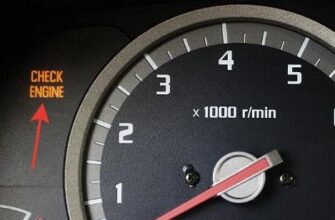You fire up your trusty Chevy Silverado, and as you look in the rearview mirror or step out for a moment, you see a plume of white billowing from the exhaust pipe. Your heart sinks a little. White smoke? Is that bad? While a little bit of visible vapor from the tailpipe isn’t always a disaster, persistent or thick white smoke from exhaust Chevy Silverado can definitely indicate a problem that shouldn’t be ignored.
Understanding the color of your exhaust smoke is like getting a diagnostic message from your truck’s engine. Black smoke usually means too much fuel, blue smoke typically signals burning oil (a topic we touched on in our post about Chevy Equinox Oil Consumption), and white smoke Chevy Silverado often points to one primary culprit: coolant.
Let’s figure out if what you’re seeing is just normal, harmless vapor or something more serious requiring immediate attention.
Is It Smoke or Just Steam? (The Harmless Cause)
Before you panic about a major engine repair, the very first thing to determine is whether the “smoke” is actually just steam or condensation.
- Why it happens: When a vehicle sits, especially in cold or humid weather, condensation builds up inside the exhaust system. When you start the engine, the hot exhaust gasses heat up the pipe, causing this condensation to turn into vapor (steam) and exit through the tailpipe.
- What it looks like: This is usually thin, wispy white vapor. It looks a lot like steam from a tea kettle.
- How to tell the difference: Normal condensation (steam) is most noticeable on cold startups. It will disappear relatively quickly as the exhaust system warms up, usually within a few minutes of driving. It has no distinct smell (or maybe just a slightly damp smell).
If your Silverado blows white vapor for a short time after starting, especially when it’s cold, and it disappears once the engine warms up, you likely don’t have a problem. It’s just water vapor.
“When I start my Silverado on a cold morning here in Colorado, it always puts out a decent amount of white stuff for the first few minutes. Gary, 68, my neighbor who’s a retired mechanic, told me not to worry; it’s just condensation burning off in the exhaust. He was right, it always goes away.” – A Silverado owner observing normal startup behavior
Persistent White Smoke: The Serious Causes (Likely Coolant)
If the white smoke is thick, persistent, doesn’t disappear as the engine warms up, or has a noticeable smell, it’s a strong indicator that something other than fuel is being burned in the combustion chambers – most likely coolant.
Coolant leaking into the combustion chamber is a serious issue because coolant is not designed to be burned. It doesn’t compress like air and fuel, and its byproducts can damage internal engine components and the exhaust system over time. Here are the most common ways coolant can enter the combustion chamber:
1. Blown or Leaking Head Gasket
This is arguably the most frequent and well-known cause of persistent white exhaust smoke. The head gasket is a seal between the engine block and the cylinder head. Its job is to seal the combustion chambers and prevent engine oil, coolant, and combustion gasses from mixing or leaking externally.
- Why it happens: Head gaskets can fail due to overheating (the most common cause), age, defects, or detonation (engine knocking). A failure can create a pathway for coolant to leak into one or more cylinders.
- What it leads to: As the engine runs, the coolant in the cylinder is burned during combustion, producing thick, white smoke. This is a classic blown head gasket symptom Chevy Silverado.
2. Cracked Cylinder Head or Engine Block
Less common than a blown head gasket, but more severe. Cracks in the cylinder head or engine block can also allow coolant to seep into the combustion chamber.
- Why it happens: Extreme overheating is the most common cause of cracks. Manufacturing defects can also rarely be a factor.
- What it leads to: Like a blown head gasket, coolant enters the cylinder and burns, causing white smoke. This repair is significantly more expensive than just replacing a head gasket, sometimes requiring engine replacement.
3. Leaking Intake Manifold Gasket (Especially on Some Older V8s)
On certain Chevy V8 engines, the design of the intake manifold and its gaskets (particularly if it’s a “wet” intake where coolant flows through it) can lead to coolant leaks into the intake ports and subsequently into the combustion chambers.
- Why it happens: Gaskets can deteriorate over time.
- What it leads to: Coolant gets drawn into the cylinder(s) and burns, producing white smoke. While often a less involved repair than a head gasket, it still needs prompt attention. Searching specifically for “[Chevy Silverado intake manifold gasket coolant leak]” for your truck’s year and engine might provide relevant information if this is a known issue for your model.
4. Faulty EGR Cooler (More Common on Diesel Silverados)
If your Silverado is equipped with a diesel engine and an EGR (Exhaust Gas Recirculation) cooler, a failure in the cooler can allow coolant to leak into the exhaust stream, where it turns to steam/smoke.
- Why it happens: Internal failure of the cooler.
- What it leads to: White smoke from the exhaust, coolant loss, and potential EGR system trouble codes.
Symptoms Associated with Burning Coolant
Besides the persistent white smoke, burning coolant in your Chevy Silverado can manifest in other ways:
- Sweet Smell: Burning antifreeze often produces a distinct, sweet odor from the exhaust.
- Decreasing Coolant Level: You might notice your coolant reservoir level dropping over time without any visible external leaks. This is a key sign that coolant is going somewhere it shouldn’t be.
- Milky or Foamy Oil: If coolant is leaking into the crankcase, it can mix with the engine oil, creating a milky or foamy appearance, often visible on the dipstick or inside the oil filler cap. This is a serious sign of internal engine trouble and means you should stop driving immediately.
- Engine Overheating: Coolant loss reduces the cooling system’s efficiency, which can lead to the engine overheating. Overheating can cause further damage, including warping the cylinder head.
- Rough Running or Misfires: Coolant in the combustion chamber disrupts the air-fuel mixture and combustion process, potentially causing the engine to run rough, misfire, or hesitate. This can trigger a Check Engine light.
- White Residue on Spark Plugs: Inspecting spark plugs from cylinders affected by a coolant leak may show white, crusty deposits.
What to Do When Your Silverado Blows White Smoke
If you’re seeing white smoke that lasts more than a few minutes after startup or is thick and persistent, here’s what you should do:
- Observe the Smoke: Note how thick it is, how long it lasts, and if it has a smell (sweet indicates coolant).
- Check Coolant Level and Appearance: Once the engine is cool, check the coolant level in the reservoir. Is it low? Look at the color of the coolant – is it normal, or does it look unusual?
- Check Your Oil: Pull the engine oil dipstick. Does the oil look normal, or is it milky or foamy? Also, check under the oil filler cap for any milky residue.
- Look for External Leaks: While the smoke indicates an internal leak, quickly check around the engine and under the truck for any obvious external coolant leaks.
- Note Engine Performance: Is the engine running smoothly, or is it misfiring or losing power?
- Monitor Engine Temperature: Keep a close eye on your temperature gauge to ensure the engine isn’t overheating.

When to Seek Professional Help (Act Quickly!)
Persistent white smoke that indicates burning coolant is not something to ignore. Driving with a blown head gasket or cracked head/block can lead to severe, irreversible engine damage. Get your Chevy Silverado to a qualified mechanic as soon as possible if:
- The white smoke is thick and doesn’t go away after the engine warms up.
- You notice a sweet smell from the exhaust.
- Your coolant level is dropping without visible external leaks.
- Your engine oil looks milky or foamy (stop driving immediately!).
- Your engine is overheating.
- You have a Check Engine light along with white smoke.
A mechanic will perform diagnostic tests like a cooling system pressure test, a combustion leak test (checking for exhaust gasses in the coolant), a compression test, or a leak-down test to confirm if and where coolant is entering the combustion chamber. They can accurately diagnose the cause (blown head gasket symptoms Chevy Silverado, intake manifold leak, etc.) and recommend the necessary repairs.
Understanding dashboard warnings is crucial. If your Chevy Silverado lights up the Check Engine light (even if that guide is for a Jeep, the principle of diagnosing the code applies) or goes into limp mode, especially alongside white smoke, it’s a strong signal of a significant issue. While seemingly unrelated, internal engine issues can sometimes even indirectly affect things like air-fuel mixture, potentially even relating to codes like the P0171 Lean Code in complex ways if sensors are fouled.
You can find many helpful videos online demonstrating the appearance of white smoke from exhaust (both normal steam and problematic coolant burning) and outlining the diagnostic steps or repair processes (like head gasket replacement) by searching YouTube for terms like “[Chevy Silverado white smoke exhaust]” or “[Silverado head gasket replacement]”.
Frequently Asked Questions (FAQ)
Q: Is white smoke from my Chevy Silverado exhaust always a bad sign?
A: No, a small amount of thin white vapor, especially on cold startups, is usually just condensation (steam) burning off in the exhaust and is normal. Thick, persistent white smoke that doesn’t disappear is usually a sign of a problem, most likely burning coolant.
Q: What is the most common cause of thick white smoke from a Chevy Silverado?
A: The most common serious cause of thick white smoke indicating coolant burning is a blown or leaking head gasket. Other causes can include a cracked cylinder head/block or a leaking intake manifold gasket.
Q: How can I tell if the white smoke is coolant burning?
A: White smoke from burning coolant is typically thicker and more persistent than steam. It often has a sweet smell (like antifreeze). You might also notice a decreasing coolant level, milky or foamy oil, or the engine overheating.
Q: Can I still drive my Chevy Silverado if it’s blowing white smoke?
A: If you suspect the white smoke is from burning coolant, it is strongly recommended to minimize driving or stop driving immediately. Driving with a blown head gasket or cracked component can cause severe, permanent engine damage.
Q: What tests can diagnose the cause of white smoke?
A: A mechanic can perform diagnostic tests such as a cooling system pressure test, a combustion leak test (block test), a compression test, or a cylinder leak-down test to determine if and how coolant is entering the combustion chamber.
Conclusion
Seeing white smoke from your Chevy Silverado’s exhaust can be alarming, but differentiating between normal steam and problematic coolant burning is key. While a little wispy vapor on a cold day is nothing to worry about, persistent, thick white smoke, especially with a sweet smell or accompanied by symptoms like coolant loss or milky oil, is a strong indicator of a serious issue like a blown head gasket. Do not ignore these signs! Promptly investigate the cause by checking your fluids and observing the smoke characteristics. For persistent white smoke, getting your Silverado to a qualified mechanic for proper diagnosis is crucial to prevent further damage and get your truck back running safely and reliably.








